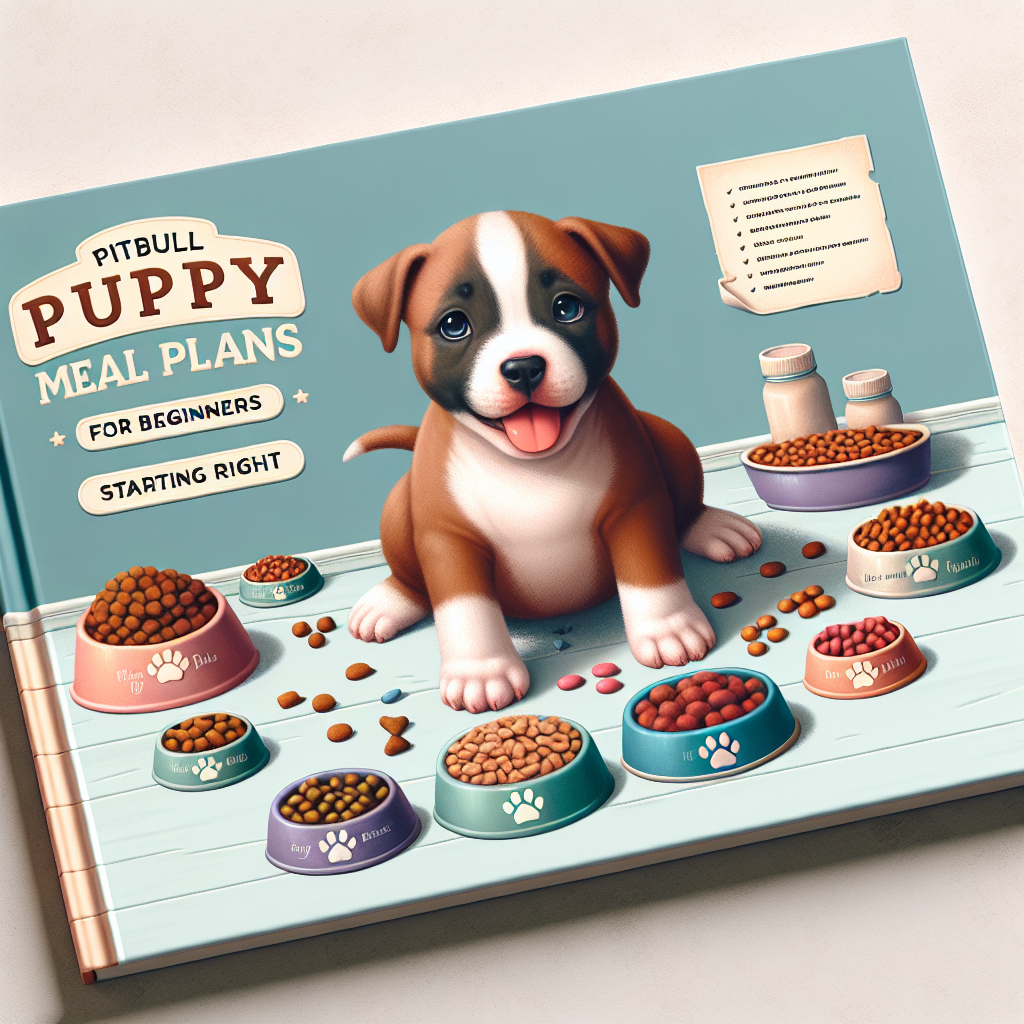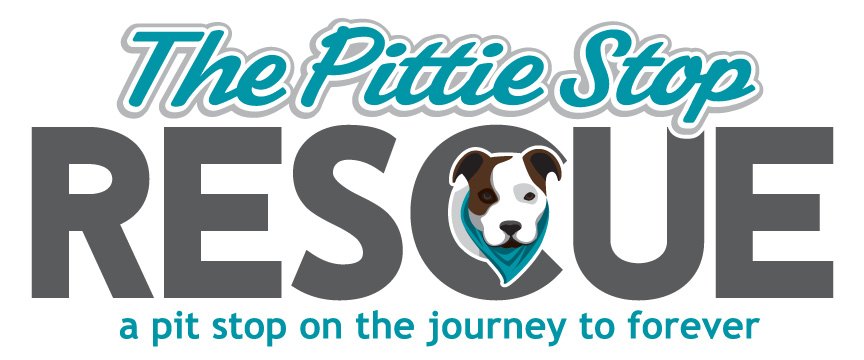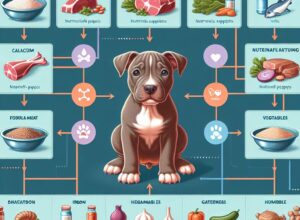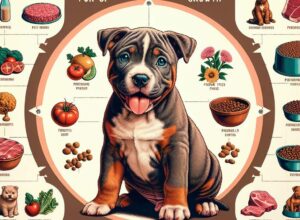
Nourishing Your New Companion: Pitbull Puppy Dietary Fundamentals
Welcome to the world of pitbull puppies, where every meal counts towards a lifetime of health and happiness. As a pitbull advocate and lover, I know that proper nutrition is the cornerstone of a thriving pup. It’s not just about filling their bowl; it’s about fueling their growth and vitality. Let’s embark on this journey together to ensure your pitbull puppy starts off on the right paw.
Key Takeaways: What You Need to Know
- Choosing the right food is critical for your pitbull puppy’s growth and health.
- A balanced diet is key: proteins, fats, and carbohydrates in the right proportions are a must.
- Understand the labels on puppy food to ensure you’re providing high-quality nourishment.
- Meal scheduling is as important as the food itself for your puppy’s digestion and energy levels.
- Transitioning from puppy to adult food should be done carefully to avoid digestive issues.
The Role of Proper Nutrition in Pitbull Puppy Development
Every pitbull puppy is unique, but they all share a need for specific nutrients to support their rapid growth. The right diet boosts their immune system, strengthens bones and muscles, and supports brain development. It’s not just about growth; it’s about setting the stage for a lifetime of well-being. Remember, a healthy puppy is a happy puppy, and a happy puppy makes for a joyful home.
Feeding Your Pitbull Puppy: The First Steps
The first step in feeding your pitbull puppy is understanding their nutritional needs. Puppies grow fast, and they need a diet that’s rich in calories and nutrients to support that growth. But it’s not just about quantity; quality is just as important. The food you choose should provide a balance of protein, fats, and carbohydrates, all essential for your pup’s development.
It’s also important to establish a feeding routine. Consistent meal times help regulate your puppy’s digestion and can prevent overeating. And while it might be tempting to spoil them with treats, moderation is key. Treats should never make up more than 10% of their diet. Stick to this rule, and you’ll be on the right track.
Starting with the Right Puppy Food
When selecting food for your pitbull puppy, go for high-quality brands that cater to the needs of large breed puppies. These foods are specially formulated to support their rapid growth and the development of strong bones and joints. Look for options that list real meat as the first ingredient, and avoid those with fillers like corn and wheat, which offer little nutritional value.
Remember, your pitbull puppy’s stomach is sensitive. The right food should be easily digestible and should support a healthy coat and skin. If you’re unsure about which brand to choose, consult your vet. They can recommend options that fit your puppy’s specific health needs and growth requirements.
Understanding Food Labels and Ingredients
Food labels can be tricky, but they hold the secrets to your puppy’s health. The ingredient list on the back of the bag is your roadmap to understanding what you’re feeding your furry friend. The first few ingredients listed should be whole foods and named meat sources, not by-products. This indicates a higher quality of protein that’s essential for your pitbull’s muscle development.
Look out for the guaranteed analysis on the label too. This gives you the minimum percentages of protein and fat, along with the maximum percentages of fiber and moisture. These numbers help you compare different brands and formulas to find the most nutrient-dense option for your pitbull puppy.
Remember, the best choice is one that combines quality ingredients with a balance of essential nutrients. It’s the foundation of a diet that will support your pitbull puppy’s growth into a strong, healthy, and vibrant dog.
Essential Nutrients for Your Growing Pitbull
Like a well-oiled machine, your pitbull puppy needs the right fuel to run smoothly. Essential nutrients are the oil and fuel. They’re what your pup needs to grow, play, and learn. Let’s make sure every meal is packed with the good stuff – proteins for strong muscles, fats for energy, and carbohydrates for stamina. This trio works together to keep your puppy in tip-top shape.
Proteins, Fats, and Carbohydrates Balance
Proteins are the building blocks of your pitbull’s body. They’re vital for muscle growth and repair. Look for foods with high-quality animal proteins like chicken, beef, or fish to help your pup bulk up in a healthy way. Fats are your puppy’s main energy source, so don’t skimp on them. They also keep their coat shiny and skin healthy. Carbohydrates give your pitbull energy over a longer period and should come from whole grains or vegetables for easy digestion.
- Animal-based proteins should be at the top of the ingredients list.
- Healthy fats like chicken fat or fish oil are great for energy and coat health.
- Complex carbohydrates from sources like sweet potatoes are best for sustained energy.
- Avoid foods with excessive fillers like corn or soy, which offer less nutritional value.
- Remember, balance is key – too much of one nutrient can be just as harmful as too little.
Vitamins and Minerals: The Building Blocks of Health
Vitamins and minerals might not be as talked about as proteins and fats, but they’re superheroes in their own right. They support everything from bone health to nerve function. Calcium and phosphorus are crucial for strong bones, while vitamins A, E, and C support the immune system and eye health. A well-rounded puppy food will include these vital nutrients, but always double-check the label to be sure.
Iron and zinc are trace minerals that play a big role in your pitbull puppy’s development. Iron helps with carrying oxygen in the blood, while zinc supports the immune system and skin health. Make sure these are included in your puppy’s diet to avoid any deficiencies that could hinder their growth.

How Much and How Often: Structuring Meal Times
Feeding your pitbull puppy isn’t just about what you feed them, but also how much and how often. Puppies have small stomachs but big energy needs. This means they need to eat more frequently than adult dogs. A structured meal plan ensures they get the right amount of food at the right times to fuel their playful antics and growth spurts.
Portion Sizes: Keeping Your Puppy Lean and Healthy
Portion control is crucial for preventing obesity, which can lead to health problems down the road. Follow the feeding guidelines on your puppy food’s label as a starting point, but remember, these are just guidelines. Every puppy is different, and activity level, metabolism, and breed size all play a part in how much food they need. Keep an eye on your puppy’s body condition and adjust portions as necessary.
- Start with the recommended portion sizes on the food packaging.
- Monitor your puppy’s weight and body condition regularly.
- Adjust food portions based on your puppy’s growth and activity level.
- Consult with your vet if you’re unsure about the right portion size for your pup.
Scheduling Meals for Optimal Energy and Digestion
Timing is everything when it comes to feeding your pitbull puppy. Young pups generally need to eat three to four times a day. This frequent feeding schedule helps with digestion and keeps their energy levels steady. As they grow, you can gradually reduce meal times to twice a day. Consistency is key, so try to feed them at the same times each day to establish a routine.
Here’s a simple meal schedule to start with:
- Breakfast: Start their day with a nutritious meal to fuel their morning playtime.
- Lunch: A midday meal helps sustain their energy through the afternoon.
- Dinner: Evening is a time for winding down, but they still need a good meal to support overnight growth and repair.
Remember, fresh water should always be available to your puppy. Hydration is just as important as nutrition, so keep that water bowl full and clean.
Transitioning Foods: When and How?
As your pitbull puppy grows, their nutritional needs change. This means you’ll need to transition them from puppy food to adult dog food. This switch usually happens around the one-year mark, but for some larger breeds, it might be a bit later. The key is to make this transition gradually. A sudden change in diet can cause stomach upset and other digestive issues.
Switching from Puppy to Adult Dog Food Safely
Start by mixing a small amount of adult food with their regular puppy food. Over the course of a week or two, gradually increase the proportion of adult food while decreasing the puppy food. By the end of the transition period, your pitbull should be eating 100% adult food. Keep an eye on their reaction to the new food, and if you notice any digestive issues, slow down the transition process.
- Begin the transition when your puppy is around one year old.
- Mix adult food into the puppy food in slowly increasing amounts.
- Monitor your puppy’s health and digestion throughout the process.
- If issues arise, consult your vet and adjust the transition speed accordingly.
The Pros and Cons of Different Food Types
Picking the right type of food for your pitbull puppy can be daunting. There are so many options out there, each with its own set of benefits and drawbacks. Let’s take a closer look at the main types of food you might consider for your growing pup.
Dry Kibble: Convenience and Nutrition in One
Dry kibble is the most popular choice for many dog owners. It’s convenient, cost-effective, and has a long shelf life. High-quality kibble is packed with nutrients and is formulated to meet all of your pitbull puppy’s dietary needs. It also helps keep their teeth clean by reducing plaque buildup. However, some dogs prefer the taste and texture of wet food, and kibble can be less appealing to picky eaters.
- Convenient and easy to store.
- Cost-effective compared to other food types.
- Can help maintain dental health.
- Look for high-quality brands with whole ingredients.
Wet Food, Homemade, and Raw Diets: Tailoring to Your Pup’s Needs
Wet food can be more palatable for some puppies and is a good option for those who need extra hydration. However, it’s usually more expensive than kibble and doesn’t provide the dental benefits that dry food does. Homemade and raw diets allow for complete control over ingredients, which is great for puppies with specific dietary needs or allergies. But these diets require a lot of time, knowledge, and effort to ensure they’re nutritionally complete. Always consult with a vet before going down this path.
- Wet food is tasty and hydrating but can be more expensive.
- Homemade diets offer control over ingredients but require careful planning.
- Raw diets can provide natural nutrition but must be prepared safely to avoid health risks.
- Always work with a vet to ensure any homemade or raw diet is nutritionally complete.
Special Dietary Considerations for Pitbull Puppies
Pitbull puppies, like all dogs, can have special dietary needs. Some may have allergies or sensitivities to certain ingredients. Others might need a special diet to address health issues like hip dysplasia, which is common in larger breeds. It’s important to be vigilant and responsive to your puppy’s individual needs.
Food allergies in puppies can manifest as skin irritations, gastrointestinal upset, or ear infections. If you suspect your pitbull puppy has a food allergy, consult your vet. They can help identify the allergen and recommend a hypoallergenic diet. For conditions like hip dysplasia, a diet rich in omega-3 fatty acids can help reduce inflammation and support joint health.
Always be on the lookout for signs that your puppy isn’t thriving on their current diet. Changes in coat condition, energy levels, or bowel movements can indicate a dietary issue. With careful observation and the right dietary adjustments, you can ensure your pitbull puppy grows into a strong and healthy adult.
Accounting for Food Allergies and Sensitivities
Food allergies and sensitivities can be a real concern for pitbull puppies. If you notice your pup scratching incessantly, dealing with regular digestive upset, or suffering from chronic ear infections, it might be time to consider whether their diet is to blame. Identifying and eliminating the culprit ingredient is key to providing relief.
- Common allergens include beef, dairy, wheat, egg, chicken, lamb, soy, pork, rabbit, and fish.
- Work with your vet to conduct an elimination diet trial to pinpoint the allergen.
- Once identified, choose a limited ingredient diet that avoids the allergen.
- Be patient; it can take several weeks to see improvement after a dietary change.
Supplementation: Is it Necessary?
While a well-balanced puppy food should provide all the necessary nutrients, there are cases where supplements can be beneficial. For example, if your vet diagnoses your pitbull puppy with a specific deficiency, they may recommend a supplement. However, it’s crucial not to self-prescribe supplements as excessive amounts of certain nutrients can be harmful.
- Consult with your vet before starting any supplements.
- Omega-3 supplements can support skin and coat health, and joint function.
- Probiotics can aid in digestion and gut health.
- Always adhere to the recommended dosage provided by your vet.

Keeping Your Pitbull Puppy Hydrated
Hydration is just as important as nutrition for your growing pitbull puppy. Water facilitates digestion, regulates body temperature, and helps flush out toxins. It’s essential for keeping your puppy healthy and preventing dehydration, especially after playtime or on hot days.
Water Intake: How Much Does Your Puppy Need?
The amount of water a pitbull puppy needs can vary based on their size, diet, and activity level. A general rule of thumb is that puppies need about half a cup of water every two hours. If they’re active or it’s particularly warm, they may need more. Make sure fresh water is always available, and clean their water bowl daily to prevent bacteria growth.
- Puppies generally need about 1 ounce of water per pound of body weight per day.
- Monitor your puppy’s water intake; too little can lead to dehydration, too much can indicate other health issues.
- Change water frequently to ensure it’s fresh and clean.
FAQs: Your Pitbull Puppy Nutrition Questions Answered
What are the signs my puppy isn’t getting the right nutrients?
It’s vital to know the signs that your pitbull puppy may not be getting the right balance of nutrients. Poor nutrition can manifest in various ways, impacting their overall well-being. Some red flags to watch out for include:
- Lackluster coat or skin issues such as excessive shedding or sores.
- Stunted growth or weight loss that’s not related to an active lifestyle.
- Chronic diarrhea or vomiting that isn’t caused by an infection or illness.
- Low energy levels or lethargy when they should be full of puppy vigor.
- Developmental problems, especially in their bones and teeth.
If you observe any of these signs, it’s crucial to consult with your vet. They can assess your puppy’s health and determine if a dietary change or supplementation is needed.
How do I know if my pitbull puppy is at the right weight?
Keeping your pitbull puppy at a healthy weight is crucial for their overall well-being. But how can you tell if they’re too skinny or carrying a little too much puppy fat? It’s simple: Look at their shape and feel their ribs. You should be able to feel their ribs without a thick layer of fat over them, and they should have a visible waist when you look down at them from above. If you’re unsure, your vet can provide a body condition score and help you adjust their diet if needed.
- Feel for ribs – they should be easily felt but not visible.
- Look for a tucked abdomen and a defined waist from above.
- Monitor their growth with regular weigh-ins, either at home or at the vet’s office.
- Adjust their food intake and exercise routine based on your vet’s recommendations.
Can I give my pitbull puppy human food as treats?
While it’s tempting to share your snacks with your pitbull puppy, not all human foods are safe for them. Some, like chocolate and onions, can be toxic. If you do choose to give them human food, make sure it’s healthy and given in moderation. Foods like plain, cooked chicken or carrots can be good options. Remember, treats should only make up a small portion of their diet to avoid weight gain and nutritional imbalances.
- Stick to safe, healthy options like lean meats and certain vegetables.
- Avoid toxic foods such as chocolate, grapes, and onions.
- Use treats sparingly to maintain a balanced diet.
- Always consult with your vet before introducing new human foods as treats.
How do I introduce new foods into my puppy’s diet?
Introducing new foods to your pitbull puppy should be a gradual process. Start by mixing a small amount of the new food with their current one, and over the course of a week, increase the new food while decreasing the old. This slow transition helps prevent digestive upset and allows you to monitor your puppy for any adverse reactions to the new food.
- Mix new food in slowly, starting with a small amount.
- Gradually increase the new food over a week while decreasing the old food.
- Watch for any signs of digestive distress or food allergies.
- If your puppy doesn’t take to the new food, consult your vet for advice.
What should I do if my puppy shows signs of food allergies?
If your pitbull puppy starts showing signs of food allergies, such as itching, red skin, or gastrointestinal issues, it’s important to act quickly. Consult your vet, who may suggest an elimination diet to identify the allergen. Once the allergen is identified, you can switch to a hypoallergenic diet that avoids the problem ingredient. Always work closely with your vet to ensure your puppy gets all the nutrients they need while avoiding allergens.
- Consult your vet at the first sign of a potential food allergy.
- Be prepared to provide detailed information about your puppy’s diet and symptoms.
- Follow your vet’s guidance on conducting an elimination diet if necessary.
- Choose a hypoallergenic diet that’s free from the identified allergens.
- Monitor your puppy’s response to the new diet and report back to your vet.
As we wrap up this guide on pitbull puppy meal plans, remember that proper nutrition is the key to a healthy, happy, and energetic puppy. By following the advice we’ve shared, you’ll be well on your way to providing your furry friend with the best possible start in life. Keep an eye on their growth, adjust their diet as needed, and always consult with your vet if you have any concerns. With love, patience, and the right nutrition, your pitbull puppy will grow into a strong and loyal companion for years to come.
Frequently Asked Questions
What are the best treats for pitbull puppies?
The best treats for pitbull puppies are those that are low in calories, high in nutrients, and appropriate for their size. Small pieces of cooked vegetables or lean meats, like chicken or turkey, can be great options. Commercial treats designed for puppies are also a good choice, as long as they’re used in moderation.
How can I tell if my pitbull puppy doesn’t like their food?
If your pitbull puppy is consistently leaving food in their bowl, they may not be fond of their current diet. Look for signs of pickiness, such as only eating when very hungry or showing more interest in treats than their meals. Consult your vet to determine if a dietary change is necessary.
Is it okay to feed my pitbull puppy table scraps?
Feeding table scraps to your pitbull puppy can lead to bad habits and nutritional imbalances. It’s best to avoid giving them leftovers from your meals. If you want to share human foods, opt for healthy options and do so sparingly as treats, not as a meal replacement.
Can I change my pitbull puppy’s food if they’re doing well on their current diet?
If your pitbull puppy is thriving on their current diet, there’s usually no need to change it. However, as they grow and their needs change, you may need to switch to an adult formula or adjust their diet to maintain optimal health. Always transition to new foods gradually to avoid upsetting their stomach.



